フィールド日記
2023.09.01
ヒメガンクビソウ
ヒメガンクビソウが咲いています。和名は花の形が、煙管(キセル)の先端部分の雁首(がんくび)に似ていて、近縁種の中で小型であることに由来します。キャンパス内ではヒノキ林の林床や林縁によく見られます。
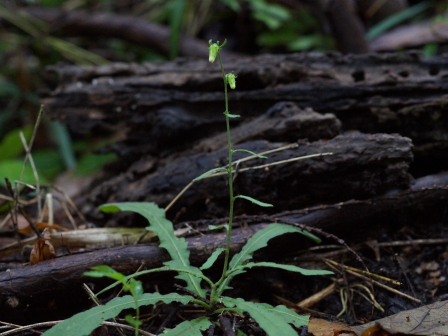
"Hime-Gankubi-Sou (ヒメガンクビソウ)" plants are in bloom. The name comes from the fact that the shape of their flowers looks like "Gankubi", which means the tip of smoking pipes, and "Hime-Gankubi-Sou" are smaller than other relative species. They are usually seen on the edges and the floors of the Japanese cypress woodland.
2023.08.29
キバナノマツバニンジン
キバナノマツバニンジンが咲いています。アメリカ原産の帰化植物で、道端などに生える多年草です。キャンパス内ではオークヒルでよく見られます。
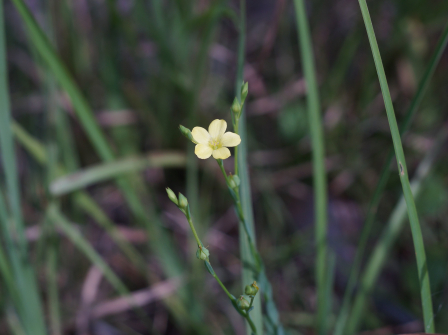
"Kibana-Matsuba-Ninjin (キバナマツバニンジン)" plants are in bloom. They originally come from North America. They are perennial plants that grow on roadsides. They are usually seen in the Oak Hill on campus.
2023.08.25
ガガイモ
ガガイモが咲いています。明るい草地などに生えるつる性の多年草です。ピンク色の星形の花びらには白い軟毛が生えています。名前のイモ(芋)は、長さ10cmほどになる果実に由来します。
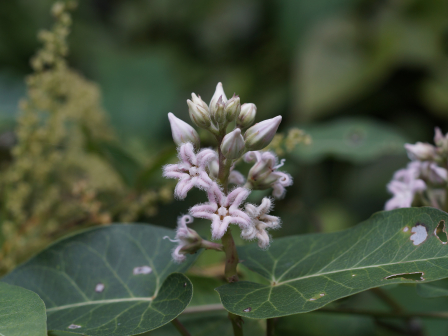
"Gaga-Imo (ガガイモ)" plants are in bloom. They are perennial vine plants that grow in sunny grass fields. The pink star-shaped petals have white soft hair. "Imo" in its name means "potato" and comes from the fact that they bear their fruits like potatoes that grow up to 10 cm.
2023.08.22
クサギ
クサギが咲いています。和名は、臭木の意味で、葉をちぎると独特のにおいがします。しかし、夏に咲く花はとても良いにおいがします。

"Kusagi (クサギ)" trees are in bloom. The name means "stinky tree" because the leaves smell bad when you rip them. However, the flowers smell very good.
2023.08.18
アリノトウグサ
アリノトウグサが咲いています。細い茎に小さい花がついています。アリノトウグサは1つの花で、雄花の時期と雌花の時期が分かれています。これは自分の花粉で受粉しないための工夫と考えられます。2枚目が雄花の時期で、3枚目が雌花の時期です。
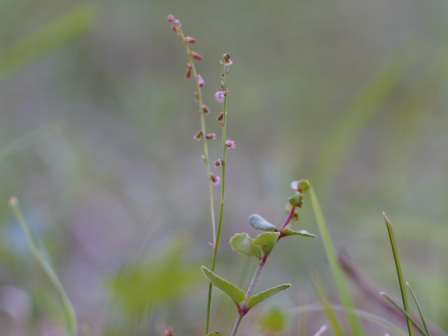
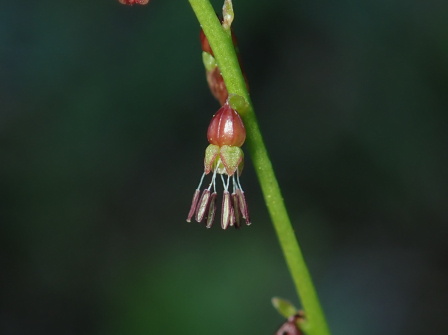

2023.08.15
ヤブミョウガ
ヤブミョウガが咲いています。和名は葉がミョウガに似ていて、藪に生えることに由来します。花も同じ時期に咲きますが、ヤブミョウガはツユクサ科、ミョウガはショウガ科に属しており、違う仲間の植物です。
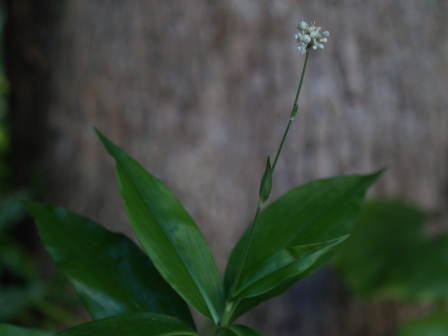
"Yabu-Myouga (ヤブミョウガ)" plants are in bloom. The name comes from the fact that their leaves look like the leaves of "Myouga (ミョウガ)" plants and that they grow in bushes, which is called "Yabu" in Japanese. However, "Yabu-Myouga" plants and "Myouga" plants belong to the "Tsuyukusa (ツユクサ)" family and the "Shouga (ショウガ)" family respectively, so they are far diffrent plants.
2023.08.11
アキノタムラソウ
アキノタムラソウが咲いています。名前にアキノとついていますが、夏から咲き始めます。同じ仲間にナツノタムラソウもあり、花の咲く時期が重なっているためまぎらわしいです。
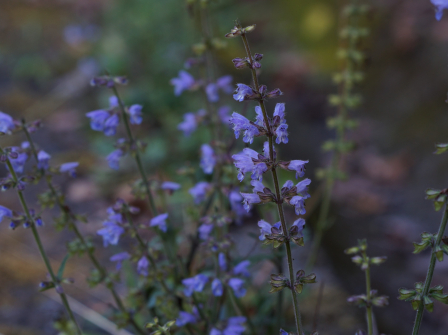
アキノタムラソウは下の写真のように、葯が開くころ、おしべが下向きに強く曲がるという特徴があります。
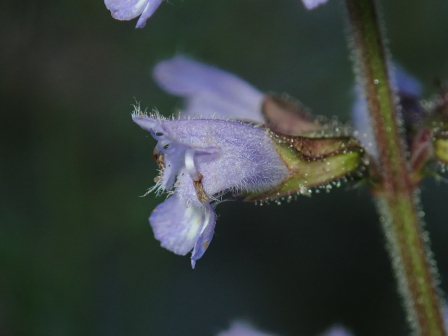
"Akino-Tamurasou (アキノタムラソウ)" plants are in bloom. "Akino" in the name means "fall" but they start to bloom in the summer. There is a relative species called "Natsuno-Tamurasou (ナツノタムラソウ)" and "Natsuno" in the name means "summer." Both of the flowering periods of "Akino-Tamurasou" and "Natsuno-Tamurasou" are overlapping each other and it is difficult to tell one from the other. One of the differences is the stamens of "Akino-Tamurasou" bend downward when their anthers are opening.
2023.08.08
コマツナギ
コマツナギが咲いています。1m前後になる落葉小低木ですが、不二聖心では定期的に草刈りが行われているため、はうように生育しています。和名のコマとは馬のことで、由来は馬をつないでおけるほど茎が丈夫だからという説と、馬が好んで食べるためその場に留めておくことができるからという説があります。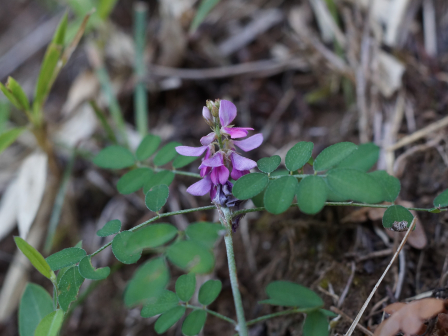
2023.08.04
キツネノマゴ
キツネノマゴが咲いています。日当たりのよい畑や道端に見られる1年草です。中央に密に集まった花序がありますが、たいてい1~2個ずつ順番に花を咲かせています。和名はその花序をキツネのしっぽに見立てたことに由来するといわれています。

"Kitsune-No-Mago (キツネノマゴ)" plants are in bloom. They are an annual plant growing in the fields and on the road sides. They have a dense flower spike on the center, but the spike usually bears only a few flowers at a time one after another. The name comes from the fact that people see the spike as the tail of a fox.
2023.08.01
ミョウガ
ミョウガが咲いています。古い時代に中国から伝わり、栽培されているほか、人家に近い林で野生化しています。野菜として食べている部分は花穂の部分で、花が咲く前のものが食べごろです。

"Myouga (ミョウガ)" plants are in bloom. They came from China a long time ago. they are cultivated and grow in the wild in woods near houses. The part that we eat as a vegetable is a flower spike. The flower spikes before flowering are the best to eat.

















